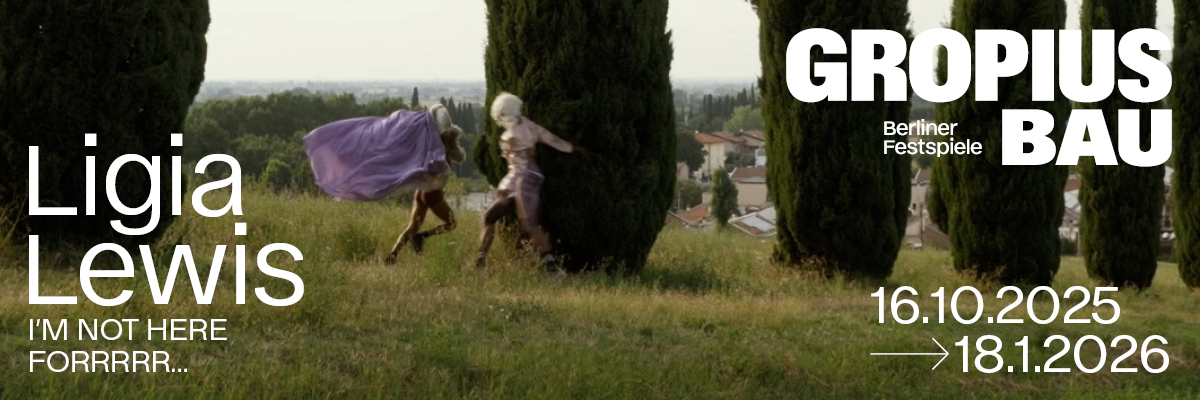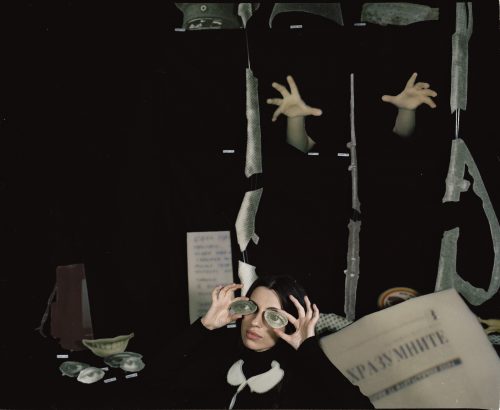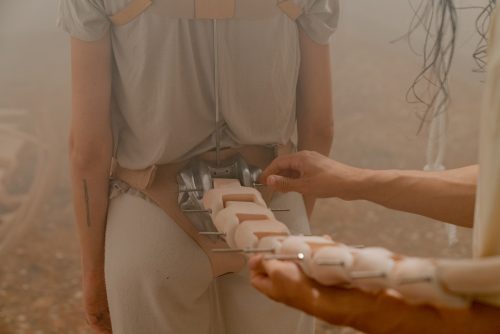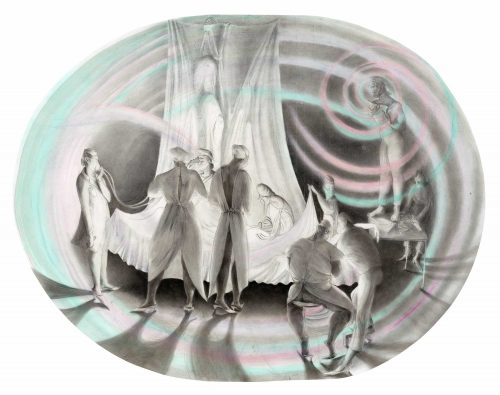
Ana Martínez Fernández, Victor Ruiz Colomer
loh te linvel
Project Info
- 💙 etHall (c/Salvadors 24, l'hospitalet de llobregat, Barcelona)
- 🖤 Ana Martínez Fernández, Victor Ruiz Colomer
- 💜 Vera Martín Zielich
- 💛 Pol Masip
Share on
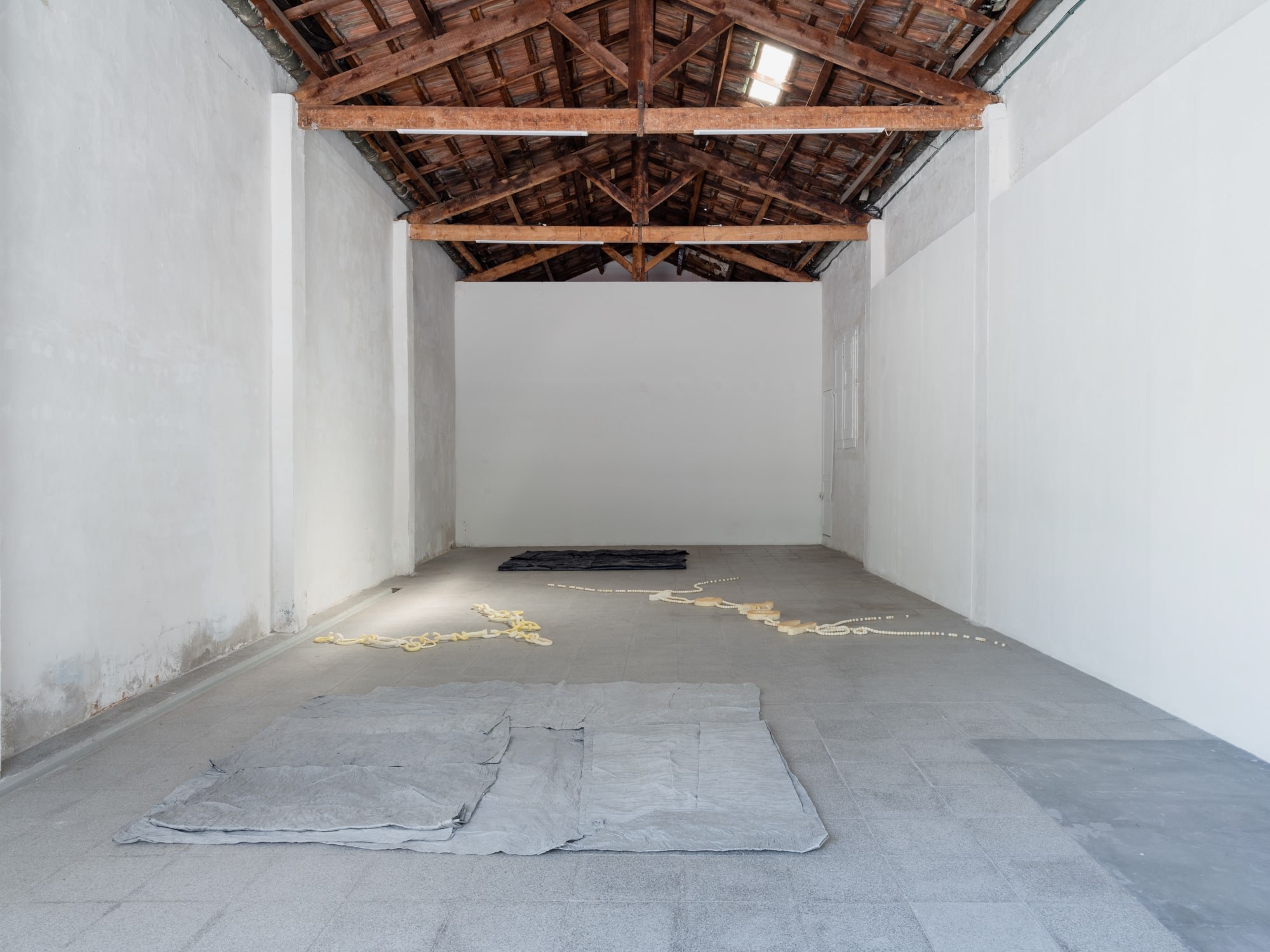
Advertisement
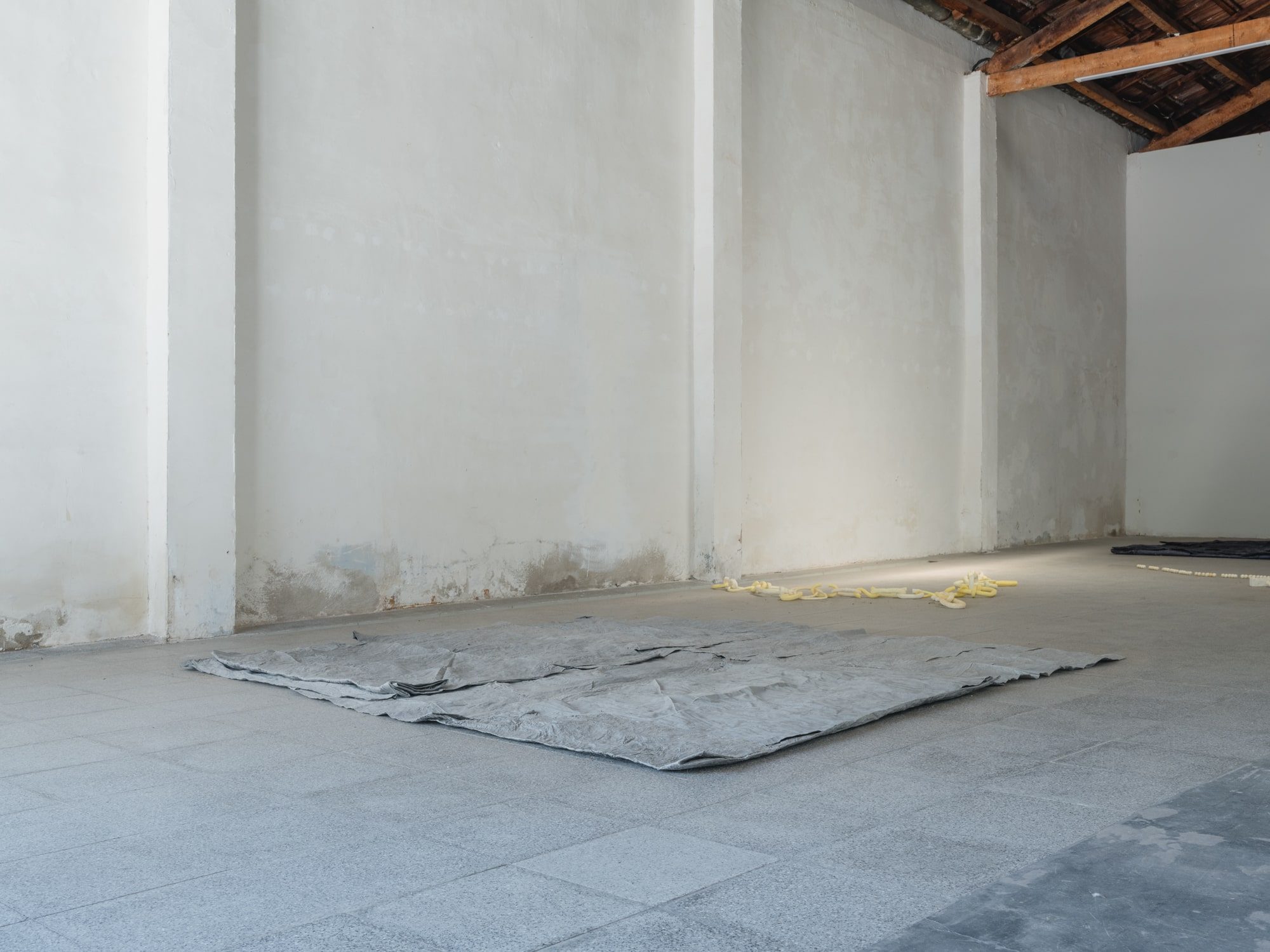
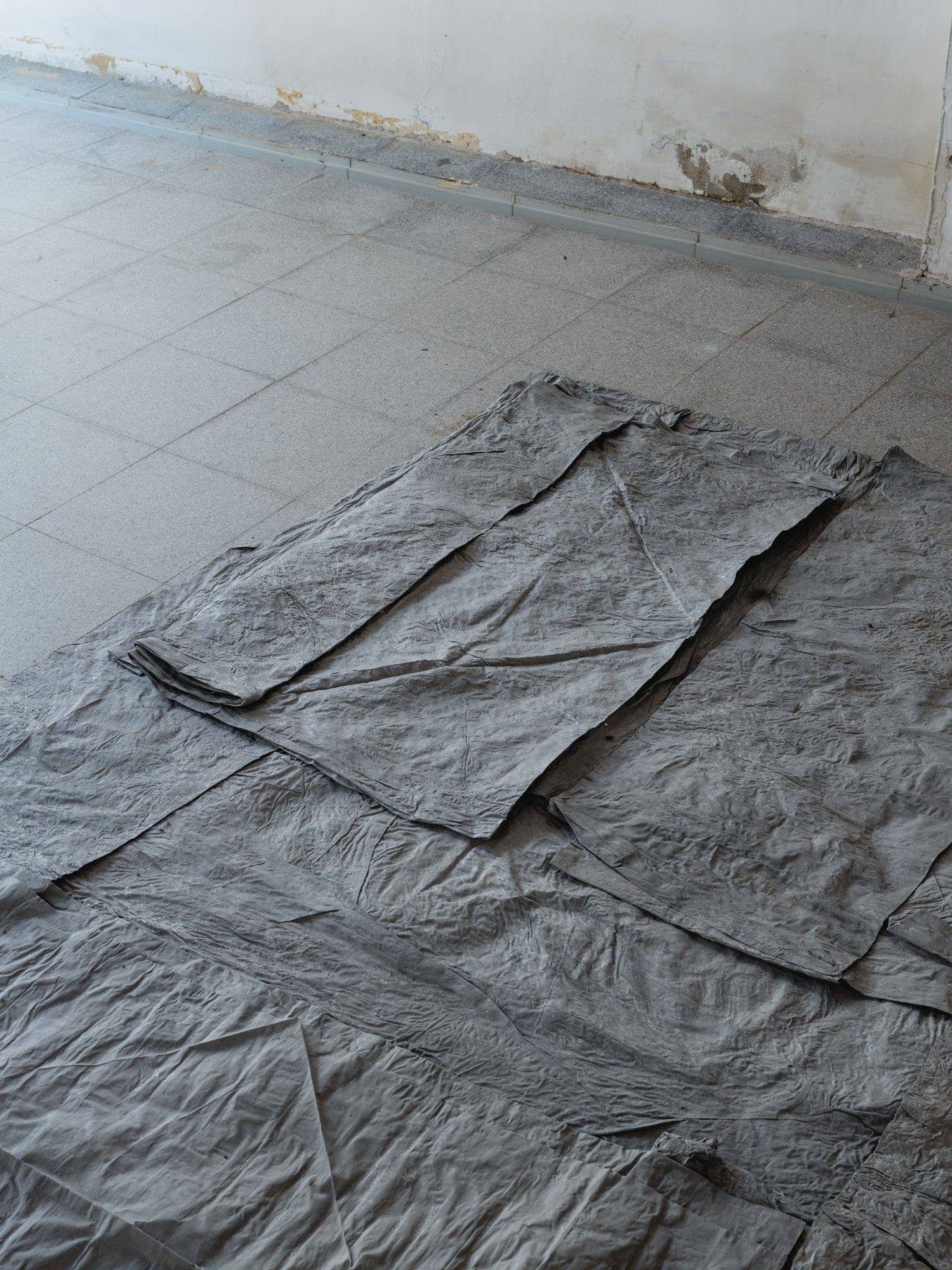
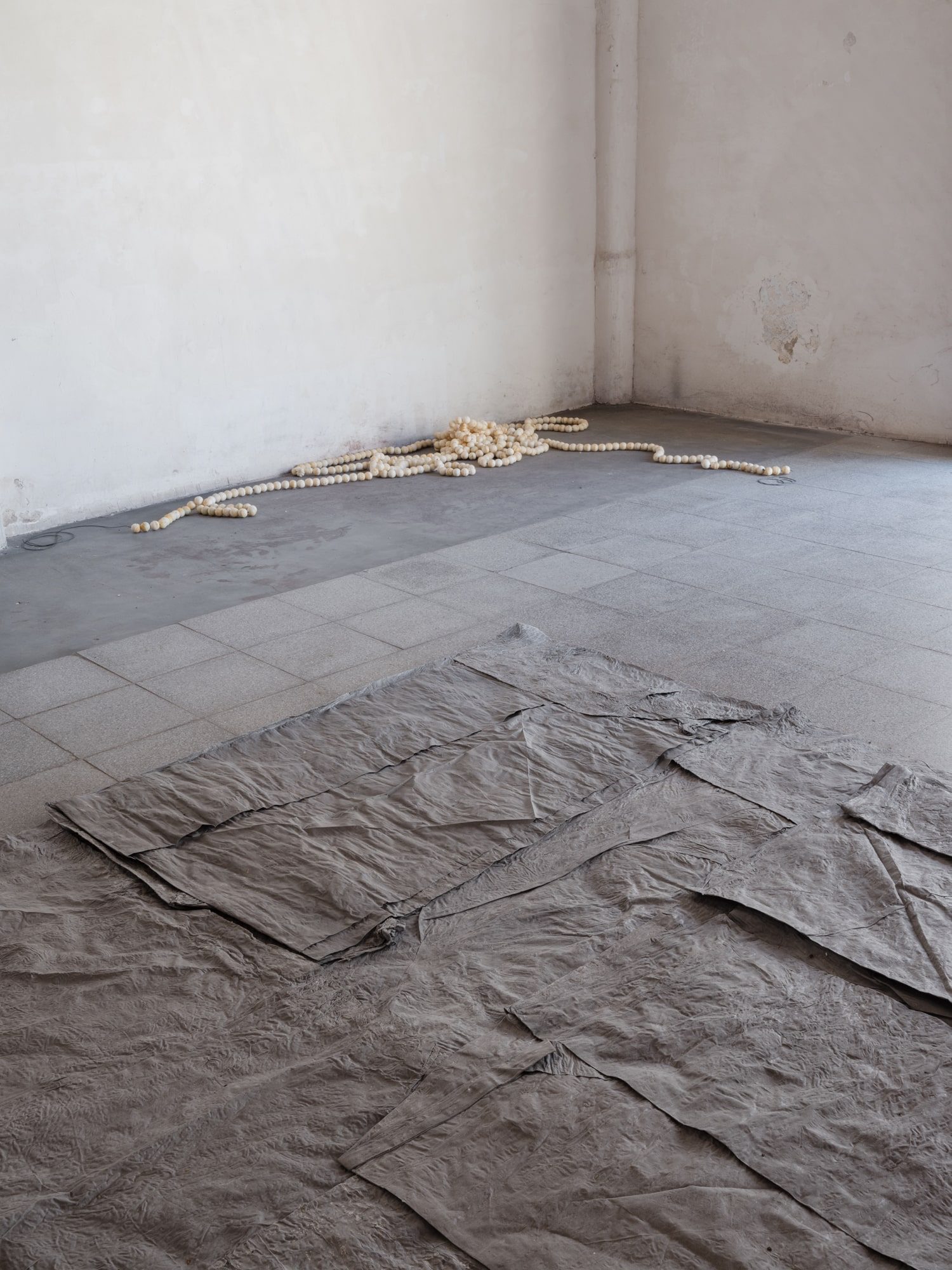
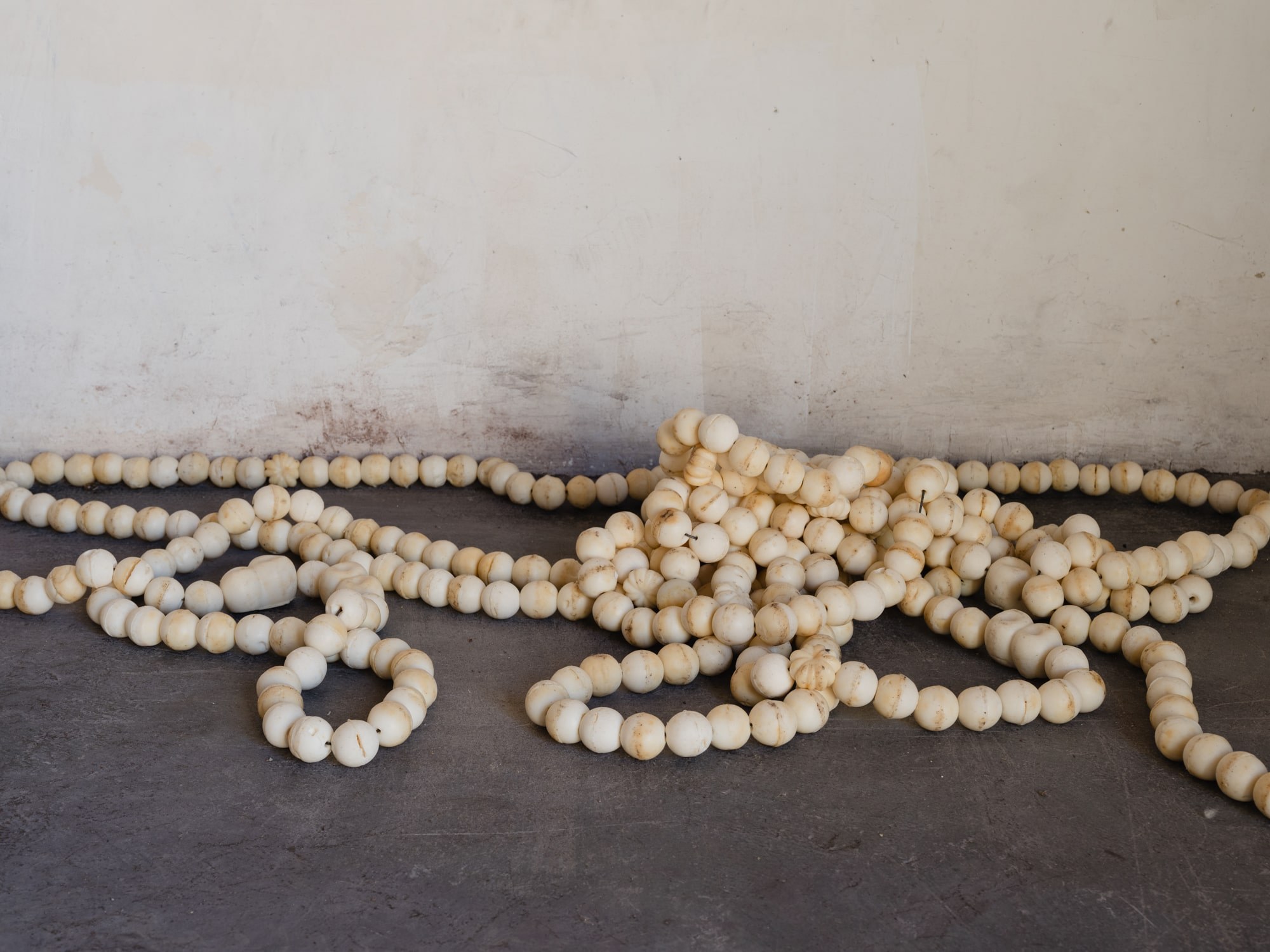
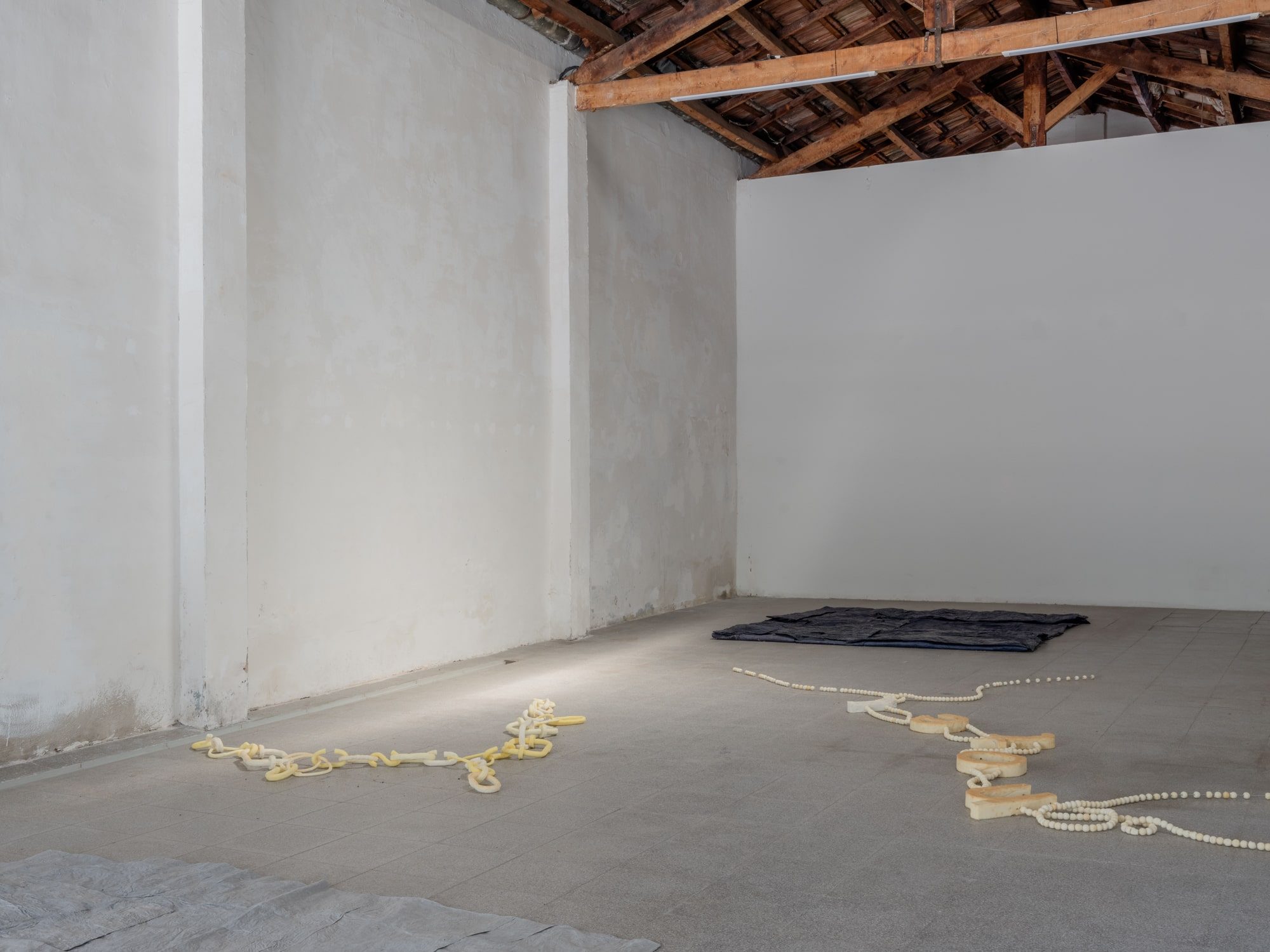
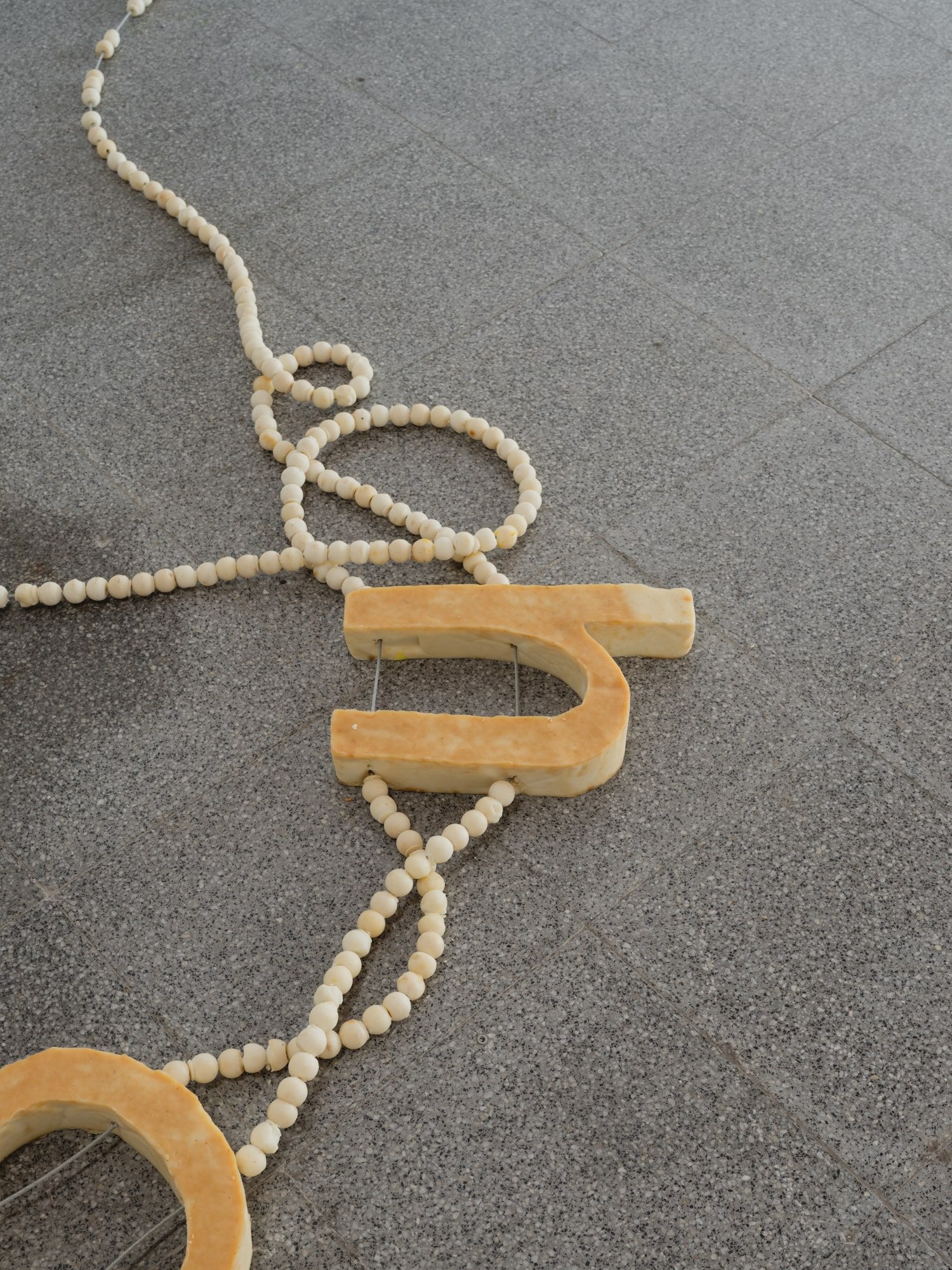
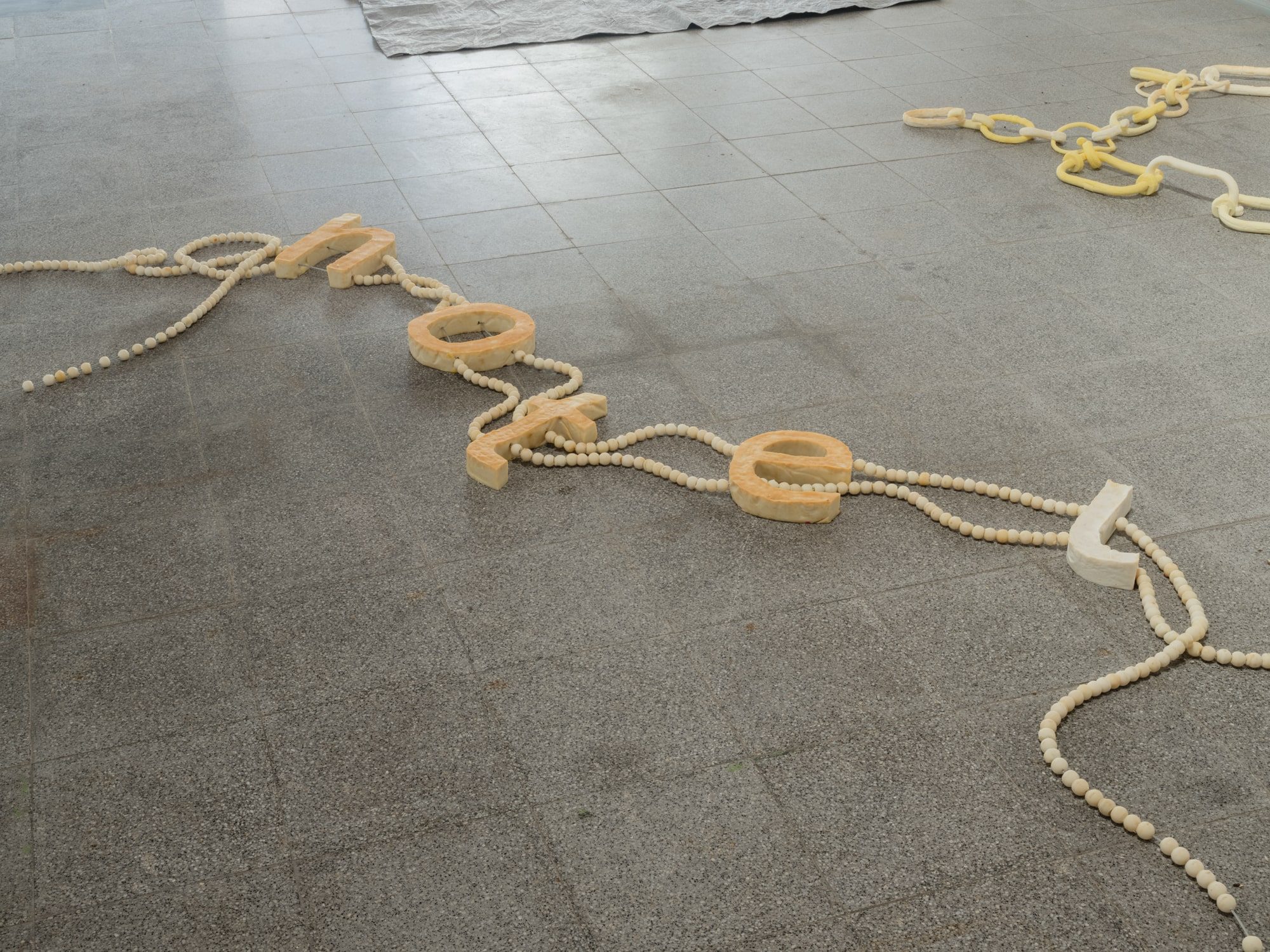


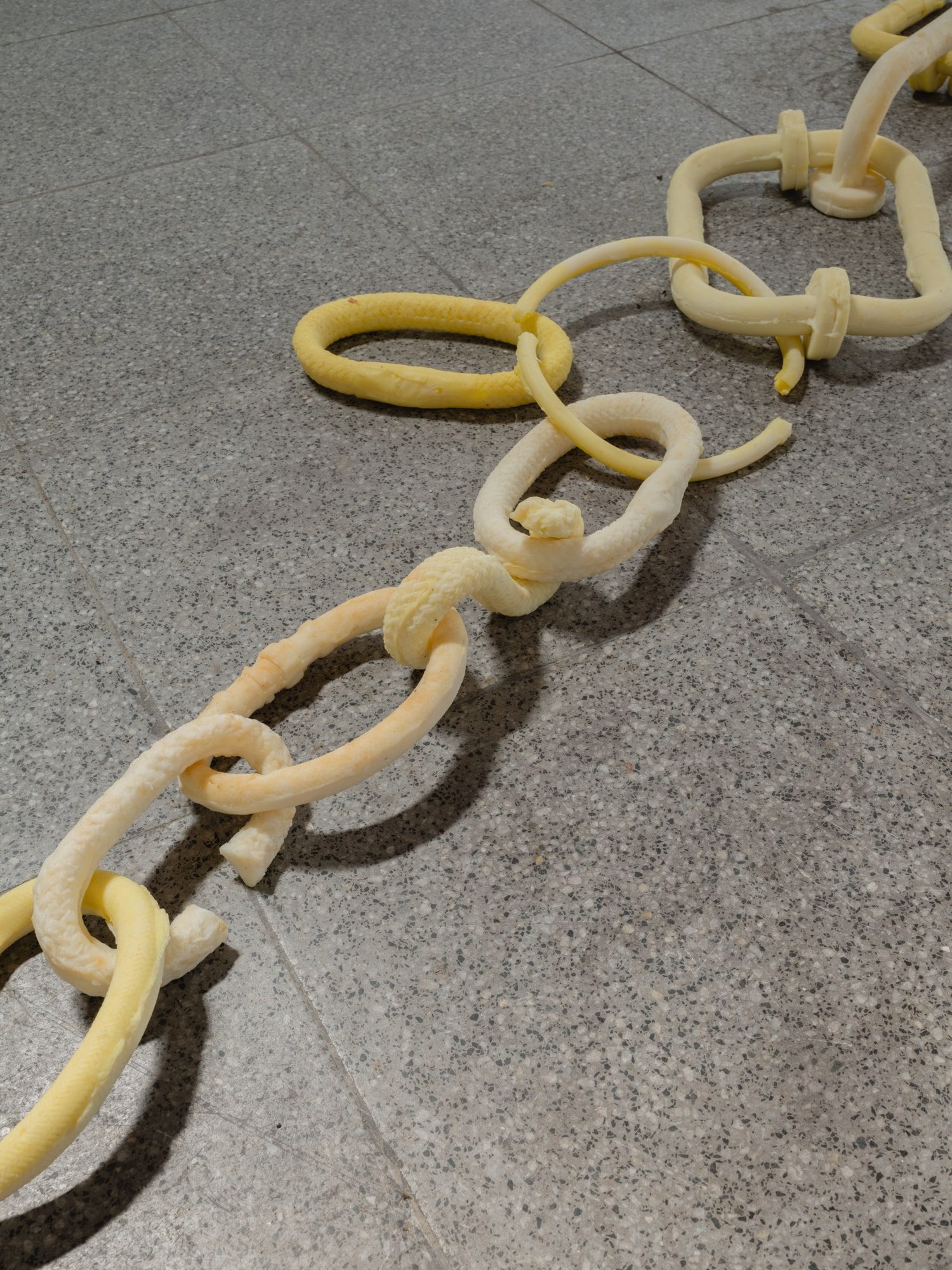

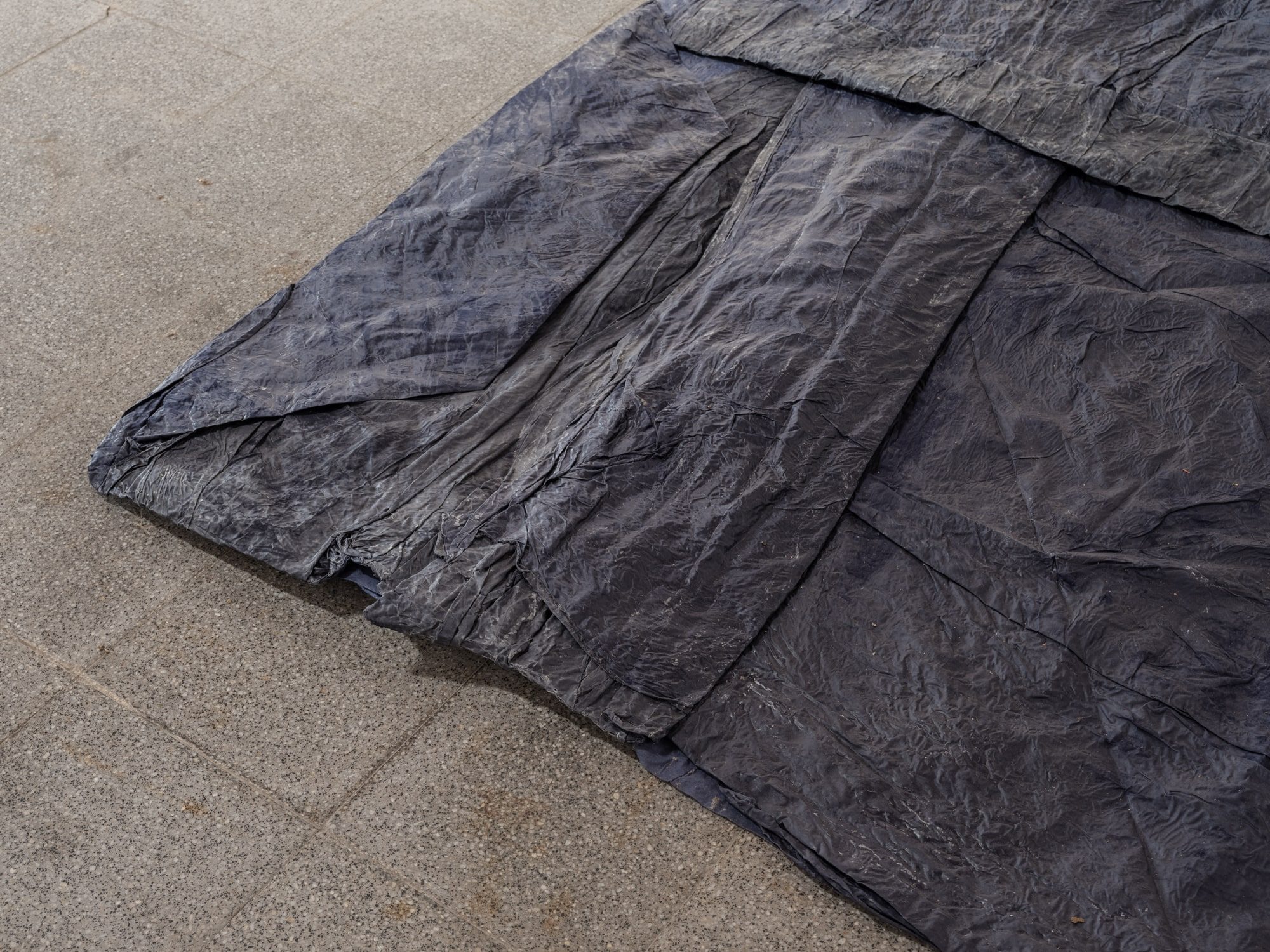
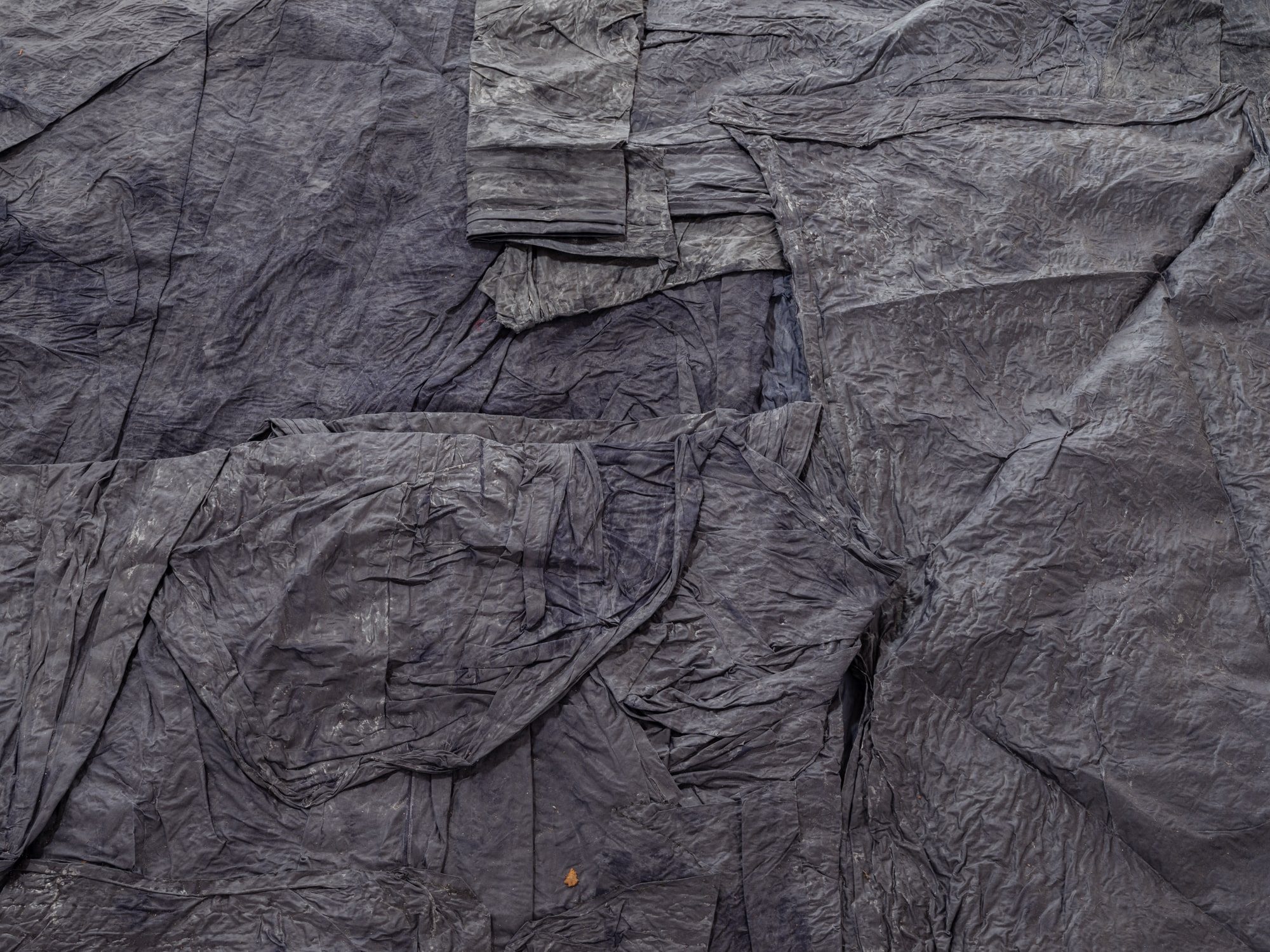

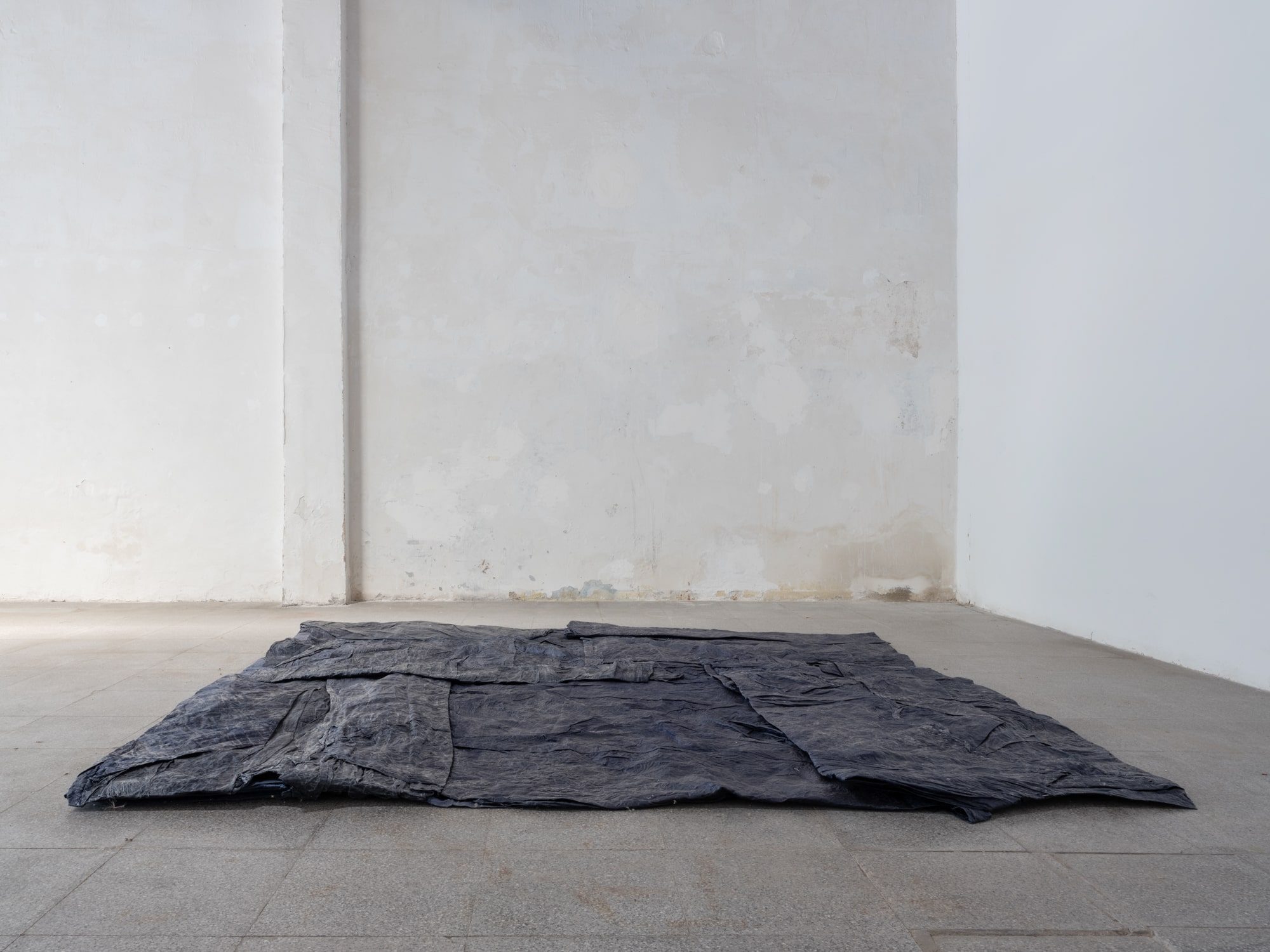
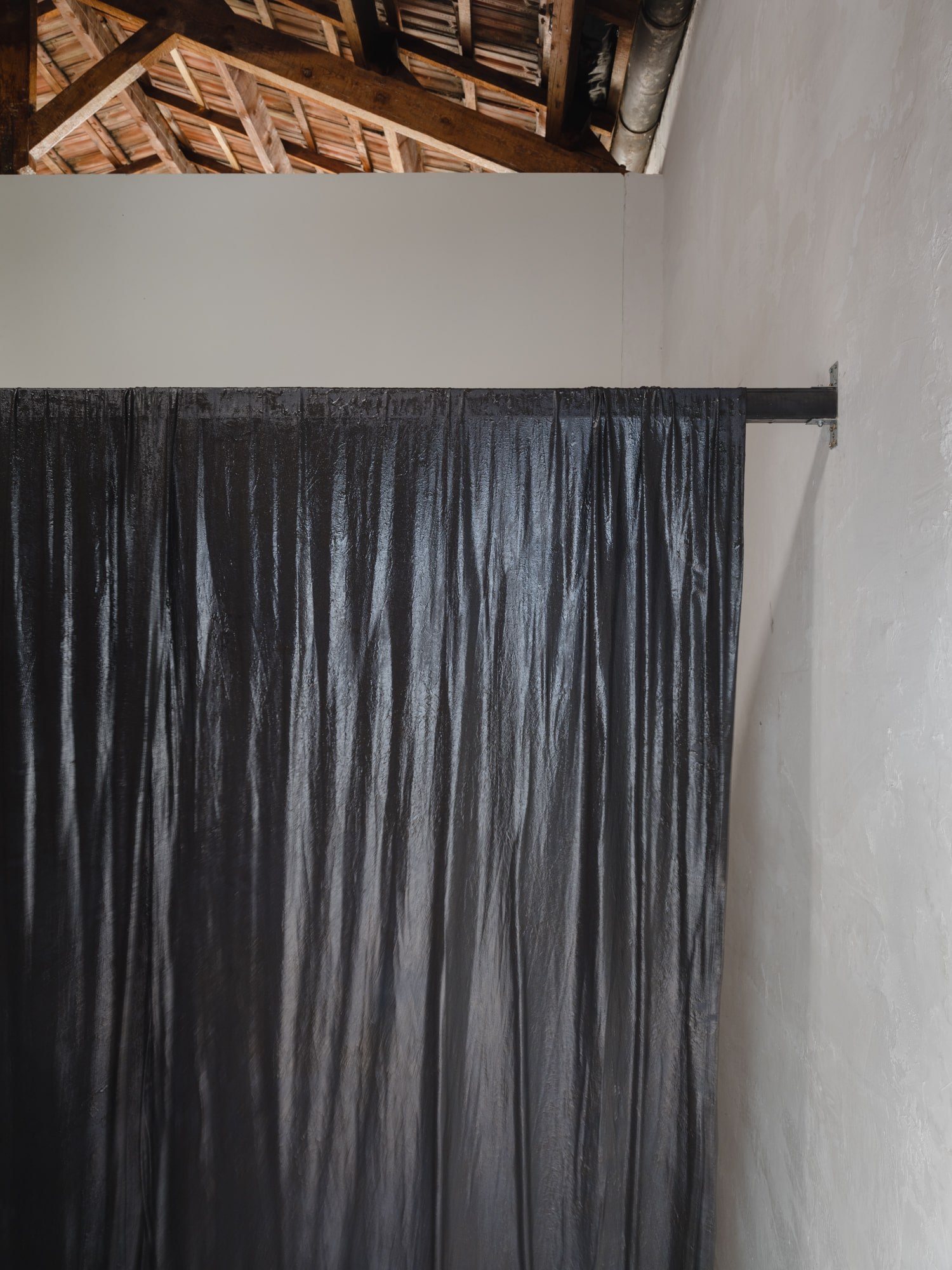
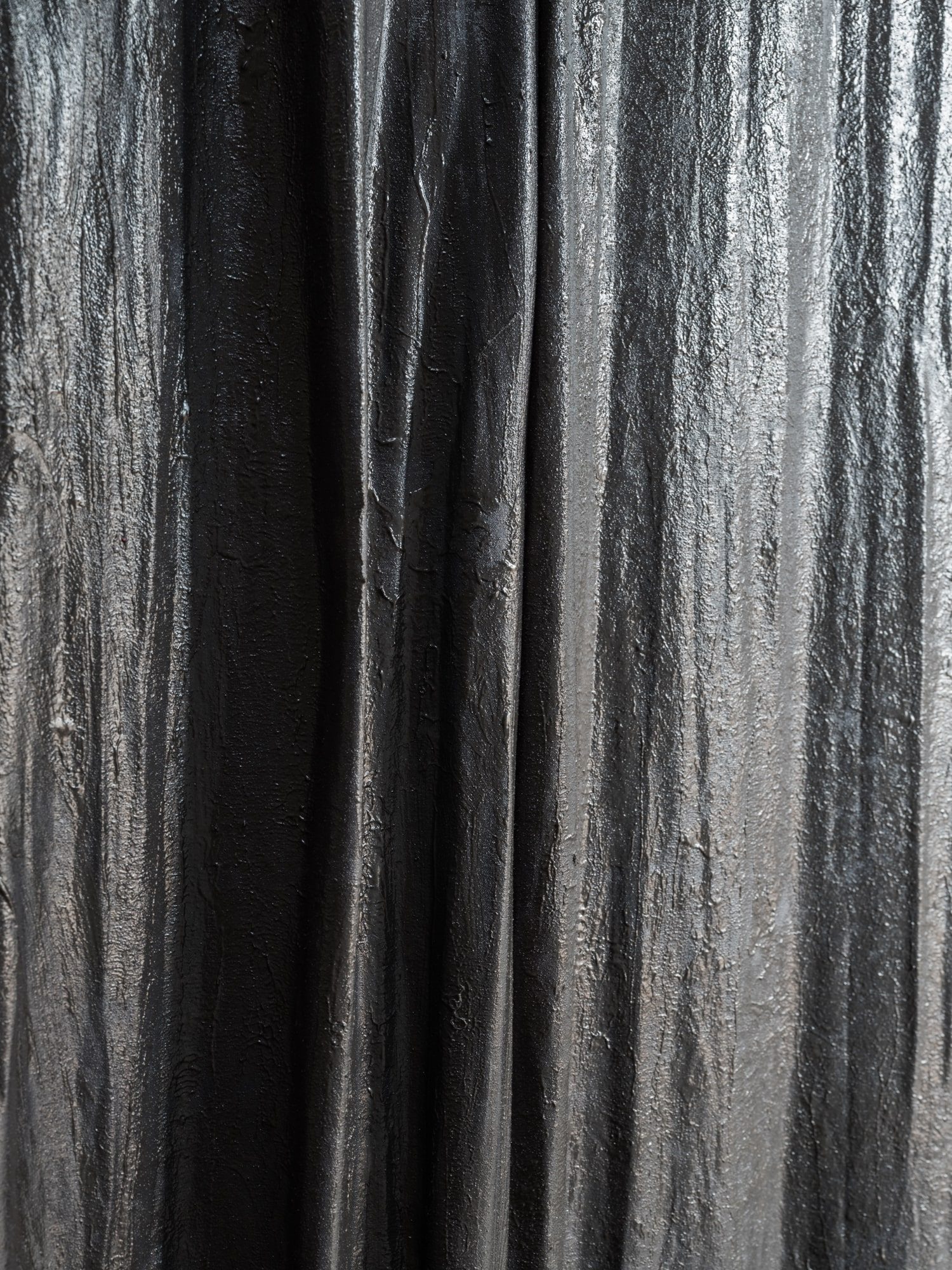
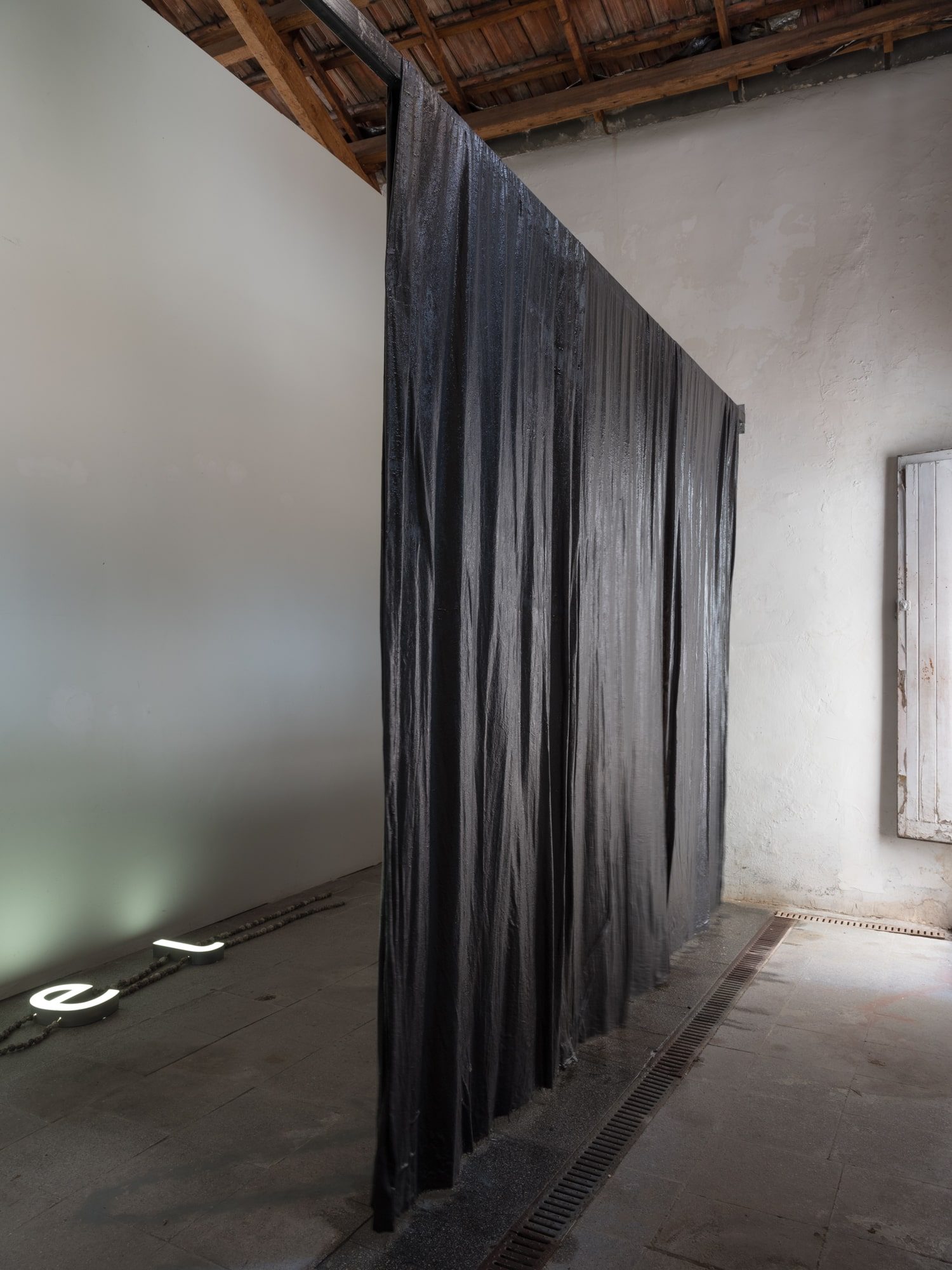
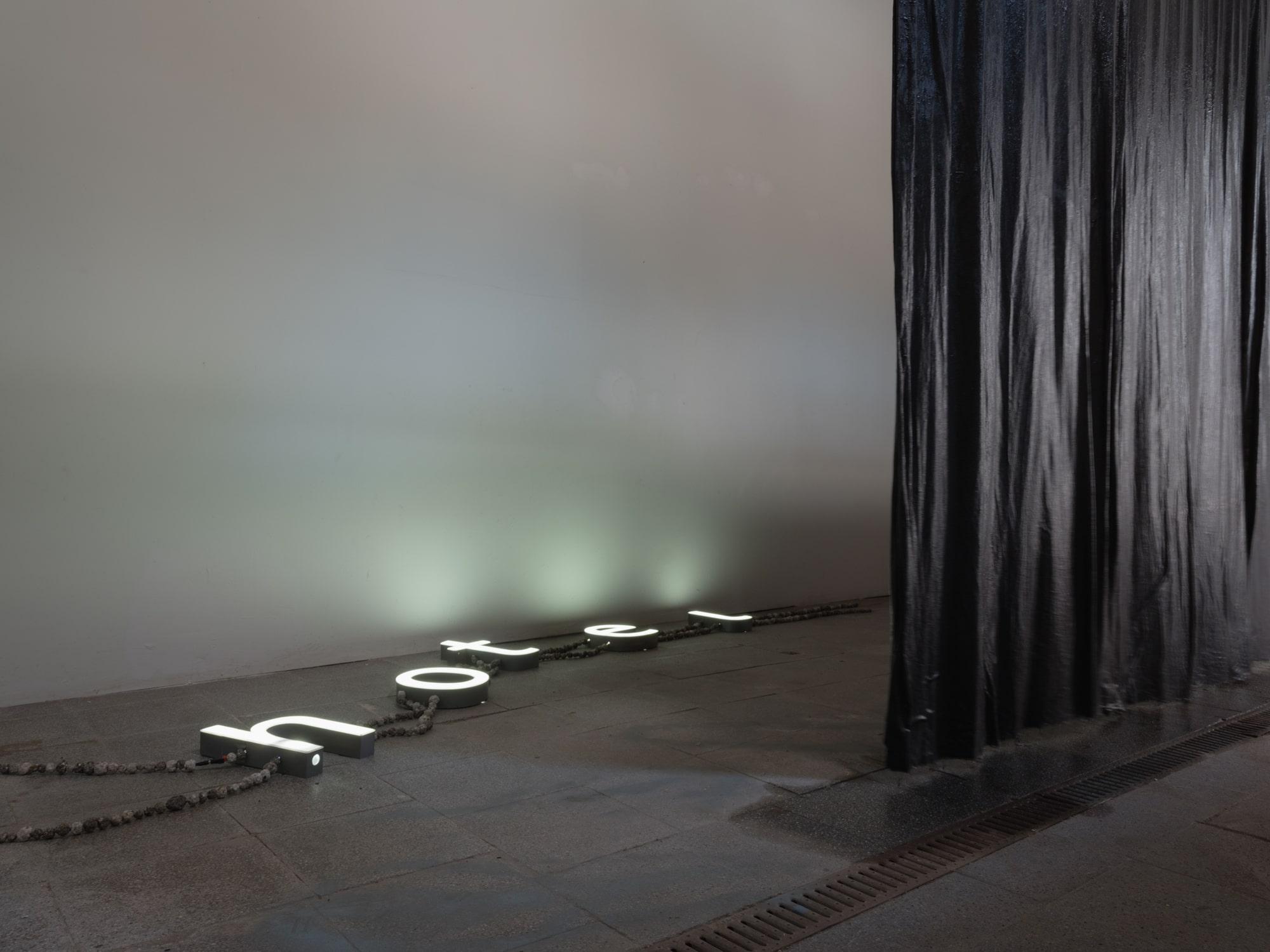
press release
The ground is taped up and with the first bending an impulse becomes formal, fatigue is coordinated, making more evident the body’s consumption in a predetermined structure.
To the ground again, this time posing, sliding, dripping or stepping on; as an ankle flexes, an arm turns, a hand presses, a back bends.
A number of materials have been seized. A braking interrupts their journey. Sudden-stop and decompression; loh te linvel from the power of what might not become. By relating materials, forms and processes, through scales without direct conversion, these sculptures sustain unstructured manifestations of desire.
loh te linvel
The shackles are drying out. In this part of the space, the breeze runs faster and you can feel a certain sonority: the rhythm of the pieces themselves, one after the other. By looking at them carefully, it is possible to imagine the passage of the air stream through the gap between them.
The Aeolian Harp is an instrument that is operated and emits sounds only with the wind that affects it. It translates through more or less discontinuous melodies the movement that is occurring in space. Joseph Joubert wrote in his diary that he sometimes felt like an Aeolian Harp: during his meditations he let himself be affected by what was happening in the environment to enter into an attentive rhythm.
3s on
1s off
2s on
1s off
1s on
1s off
10s on
off
Several planes accompany the gallery space in its verticals and horizontals: grey, blue and a blue moistened almost black. The posing of the starched, wet and folded fabrics loosens the hardness of the architecture, provoking a very physical observation to activate a movement of proximity.
The work and gesture contained in each of these pieces generate several tones; they function as fragments of a journey extended in time. A fragment is like a new beginning, when looking at any of these sculptures there will be a deviation, another beginning and a different rhythm.
Lately, I think about how something becomes an image when it’s looked at. Maurice Blanchot says that the happy thing about the image lies in that it is a limit to the indefinite. So I think something pleasant is also that that limit that is generated with the look is what allows to make an image to accompany you.
I go to see Victor and Ana working. I come back home. I go up to the roof, it is getting dark, I look towards the terrace of the house in front: a line of lights off, each one of a color, on the wall. A few hours pass, I look at the lanterns again, it is already night and now a wooden rods curtain covers them. The image is blurred: lights that dissolve following a line. The next day, I’m traveling by train, I look out the window and I see three very silver flashes in the landscape.
As I write this text I remember images that are diluted with those I keep in the memory of the visit: the movement of soap chains or Ana’s hands, shiny with vaseline. I like to think that the time since the visit to the workshop until now is the same moving image that has been adding layers of perception.
There’s a repeated gesture. That reiteration contains a certain obsession that in turn can connect with the desire to know something. Not from domination. Repetition, while it can lead to an erasure of meaning, can also, from that emptying, open the door to other displacements.
The breeze runs faster:
- Loh te linvel
- Loh te linvel
- Now, again
Vera Martín Zielich

